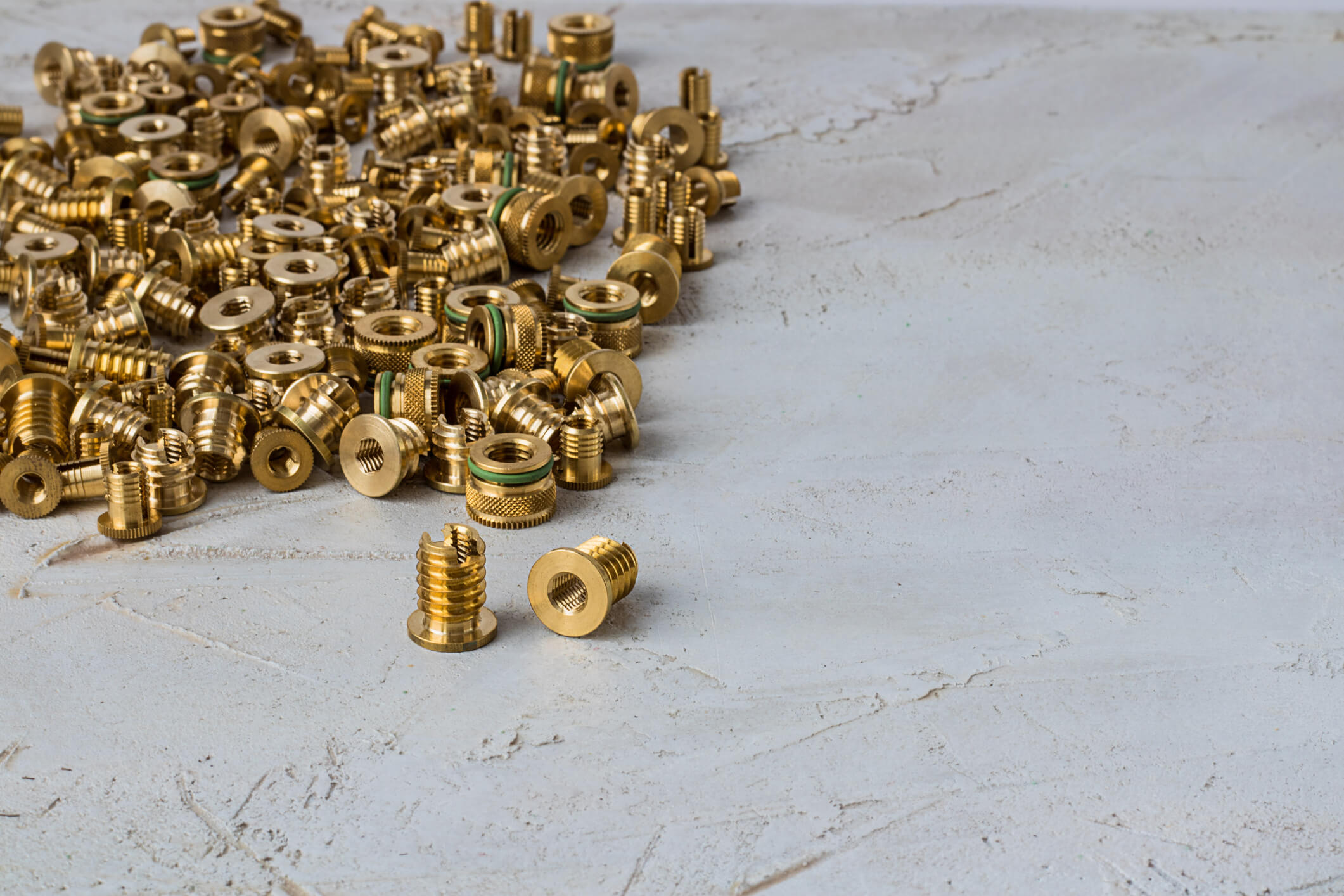
Plastics have been part of our lives since the 1950s and have become integral in manufacturing and industrial applications. However, bonding plastics with different plastics or other materials is one particularly challenging aspect of working with plastics. One of the most common and durable techniques for bonding plastic components is with threaded inserts for plastics.
Threaded inserts were designed to form a strong bond with soft or thin materials. In addition to threaded inserts for plastics, inserts also are used for light metals and thin substrates.
Threaded inserts are made from different materials and have various designs to form a secure anchor for a strong bond. Choosing the correct type of threaded insert for plastic can be difficult. The choice depends on the application, the load the bond must endure, and other variables. The unique characteristics of different plastics make choosing the right insert even more complicated. If you make the wrong choice, the joint is likely to fail.
The Basics of Threaded Insert Design
As the name suggests, a threaded insert is a sleeve with a threaded interior. The sleeve has an exterior pattern or flange to hold it securely in place, ensuring it won’t turn. Once the threaded insert is in place, it can accept a bolt, screw, or other threaded fasteners. Threaded inserts can be brass, copper, steel, or even plastic.
There are many advantages to using threaded inserts, especially when dealing with plastic workpieces. They are easy to use in an assembly line to make fast, secure joints. The threaded design also makes them ideal for applications in which materials will have to be replaced. For example, using threaded inserts in electronics makes replacing components or circuit boards easier.
Threaded inserts continue to grow in popularity because of their versatility, especially for applications in which you need a durable connection.
How to Choose the Right Threaded Insert for Plastic
There are some fundamental considerations when choosing a threaded insert for plastics.
- Consider the type of plastic. There are two commonly used types of plastics. Thermoplastics can be heated and melted, then recast multiple times. Types of thermoplastics include polypropylene, polyethylene, polyvinyl chloride, polystyrene, polyethylene terephthalate, and polycarbonate. Thermoset plastics differ in that they can only be molded once using heat and pressure.
- Consider the material your insert is made of. A second consideration is the type of material used for the insert. Brass is commonly used to make threaded inserts for plastics, but stainless steel and aluminum are becoming more popular because they are stronger and lighter.
- Identify your requirements around the pullout force. The threaded insert must be set to ensure it is sufficiently strong and won’t pull out under regular use. The insert also must not twist in the hole, especially if a fastener is repeatedly screwed in and out of the sleeve. In general, the longer the threaded insert, the greater the resistance to pull out. The wider the insert, the greater the torque capacity to prevent turning.
- Understand how different knurling patterns affect resistance to torque. The design on the outside of the sleeve is responsible for securing the insert in place. Different patterns have different characteristics. For higher torque resistance, a straight pattern is more effective in preventing the insert from turning, although a linear pattern may be more susceptible to pullout. Using perpendicular grooves can add pullout resistance. The most common pattern is a diamond knurl because it offers resistance in all directions.
Installing Threaded Inserts in Plastics
You need to consider how you install the threaded inserts when dealing with plastics. There are four common methods:
Heat-Staking Threaded Inserts
Heat-staking threaded inserts are used with thermoplastics for high-performance, low-cost installations. With heat-staking, the insert is placed in a predrilled hole and heated to melt the plastic around the hole’s edges. The melted plastic seeps into the knurled grooves and hardens when it cools, forming a solid bond. This approach is particularly popular in automated assembly applications.
Ultrasonic-Assisted Threaded Inserts
Ultrasonic-assisted threaded inserts are installed using a technique similar to heat-staking, but using ultrasonic vibrations instead of heat. This technique is used with thermoplastics and is popular for automated applications, but it requires a more controlled approach because the vibrations can damage the material.
Molded-In Threaded Inserts
Molded-in threaded inserts can be used with both thermoplastics and thermosets. For molded-in installations, the insert is positioned in a hole, and plastic resin is added to create the bond. This technique tends to be more time-consuming with close tolerances, but it yields an extremely strong bond.
Cold Pressed-In Threaded Inserts
Cold pressed-in threaded inserts are also used with thermoset plastics and have the simplest and least expensive installation process. For installation, inserts are pressed into the thermoset plastic mold. The resulting bond is not as strong, so it won’t perform as well in certain instances, but it saves production costs.
When evaluating threaded inserts for plastics, choosing the right insert type depends on the application. You need to consider the type and design of the insert, the type of plastic, and the strength necessary for the final bond.
Bay Supply has a wide variety of threaded inserts, including inserts designed specifically for plastics. To learn more about the different types of threaded inserts and their applications, get The Essential Guide to Coil Thread Inserts.



Comments